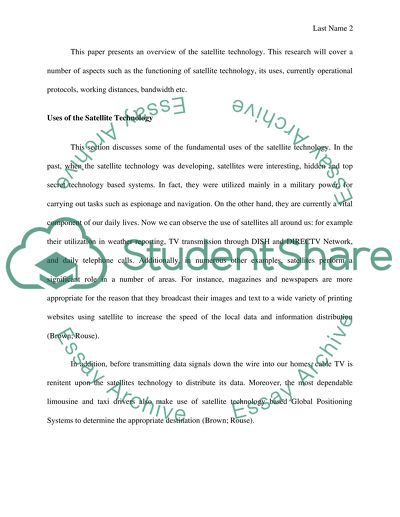Cite this document
(Satellite Technology - Uses and Applications of Satellite-Based Systems Case Study Example | Topics and Well Written Essays - 1750 words, n.d.)
Satellite Technology - Uses and Applications of Satellite-Based Systems Case Study Example | Topics and Well Written Essays - 1750 words. https://studentshare.org/technology/1457582-satellite-technology
Satellite Technology - Uses and Applications of Satellite-Based Systems Case Study Example | Topics and Well Written Essays - 1750 words. https://studentshare.org/technology/1457582-satellite-technology
(Satellite Technology - Uses and Applications of Satellite-Based Systems Case Study Example | Topics and Well Written Essays - 1750 Words)
Satellite Technology - Uses and Applications of Satellite-Based Systems Case Study Example | Topics and Well Written Essays - 1750 Words. https://studentshare.org/technology/1457582-satellite-technology.
Satellite Technology - Uses and Applications of Satellite-Based Systems Case Study Example | Topics and Well Written Essays - 1750 Words. https://studentshare.org/technology/1457582-satellite-technology.
“Satellite Technology - Uses and Applications of Satellite-Based Systems Case Study Example | Topics and Well Written Essays - 1750 Words”. https://studentshare.org/technology/1457582-satellite-technology.


